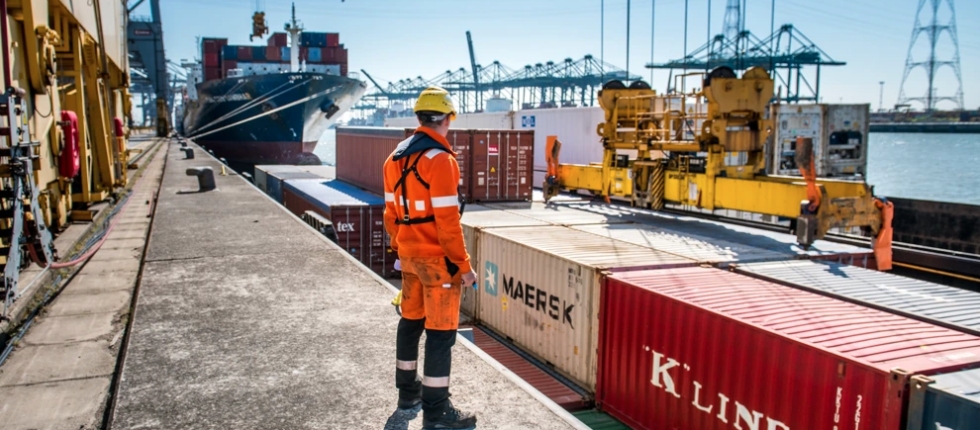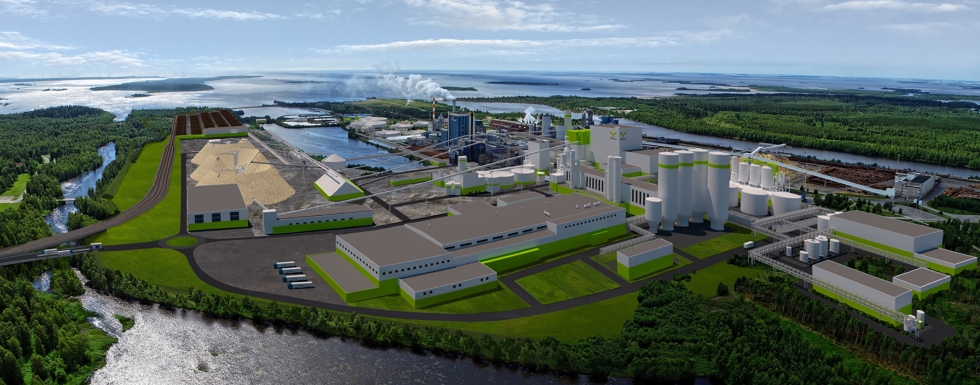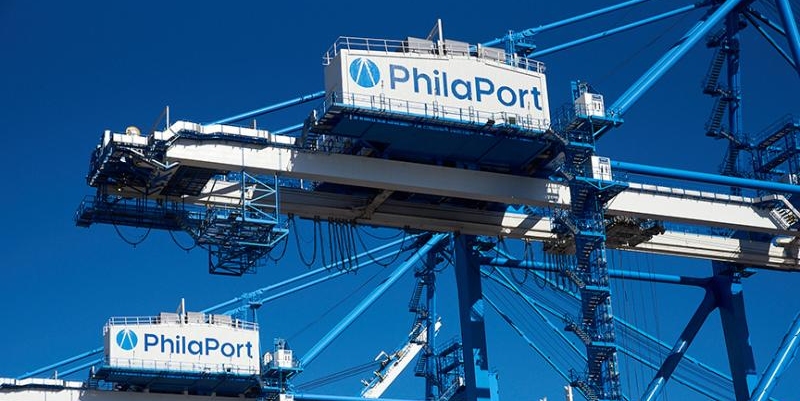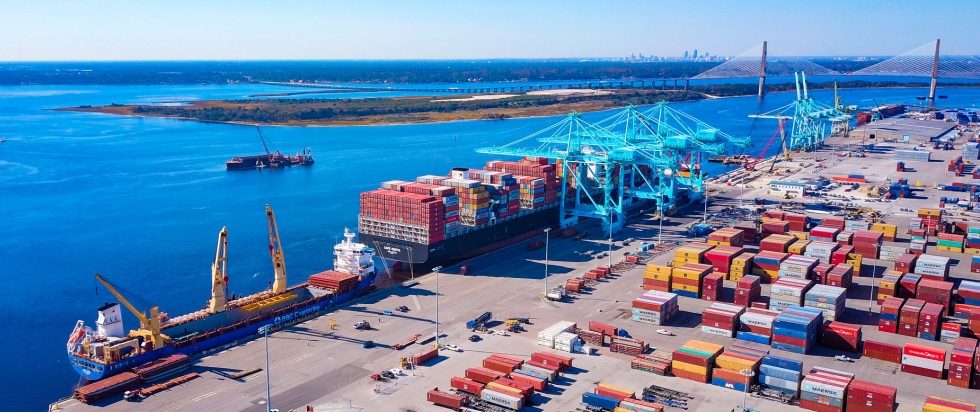|

The Ports of Antwerp and Zeebrugge to Merge, Creating Port of Antwerp-Bruges
Feb. 12, 2021 - The City of Antwerp and the City of Bruges have reached an agreement to merge their respective ports. The two-city agreement marks the start of a unification process that is expected to take a year to finalise. Once completed, the ports will operate under the name “Port of Antwerp-Bruges.”
As a result of the merger, the ports will be able to strengthen their position within the global supply chain and continue their course towards sustainable growth. Furthermore, the unified port will be more resilient to the challenges of the future and will take a lead in the transition towards a low-carbon economy.
The ambition is for Port of Antwerp-Bruges to become the world's first port to reconcile economy, people and climate.
“We are proud of this historic agreement, which seals a long-awaited unification,” said Annick De Ridder, port alderman and chair of the board of directors of the Antwerp Port Authority. “By joining forces, we are on the way to becoming Europe's global port, while at the same time reinforcing our position as the most important container port in terms of tonnage, a solid RoRo port and one of the largest break bulk ports in Europe.
The shared position of the ports of Antwerp and Zeebrugge within the global supply chain will receive a significant boost. The merged port will become the most important container port (157 million tonnes/year), one of the largest break bulk ports and the largest port for the throughput of vehicles in Europe.
Furthermore, the port will account for more than 15% of Europe’s liquid natural gas transited and it will of course remain Europe's most important chemical hub.
Finally, it will be the largest port for cruise ships in the Benelux. With a total throughput of 278 million tonnes per year, the unified port will be able to consolidate its leading position in the world.
The unification project is all about creating added value for the surrounding areas of Antwerp and Zeebrugge, for customers and stakeholders, as well as for the rest of Flanders. As part of a joint plan, the two ports have defined three strategic priorities – sustainable growth, resilience and leadership in the energy and digital transition.
Combined Strengths
Port of Antwerp-Bruges will combine the best of both worlds and will focus on the strengths of each site. The ports of Antwerp and Zeebrugge are largely complementary. For example, Antwerp specialises in the handling and storage of containers, break bulk and chemical products, while Zeebrugge is a major port for RoRo traffic, container handling and the transhipment of liquid natural gas. Working more closely together will make it possible to consolidate sustainable growth, not only of each port's individual market share, but also of the joint market share of both ports together.
In order to maximise the added value of a unified port, Port of Antwerp-Bruges will seek to develop and make optimum use of the interconnectivity between the two ports. The transportation of goods by rail between the two sites will be bundled, estuary traffic (by inland vessels on the North Sea) will be optimised and pipeline connections will also be on the list of priorities.
Committed strategic investments, such as the new sea lock in Zeebrugge and the additional container capacity in Antwerp, will go ahead. Future investments will be evaluated from a unified operational perspective, so that both port platforms will benefit, and the port continues to meet its customers' expectations.
Port of Antwerp-Bruges intends to identify as many synergies as possible, to continue to build on the extensive support within society for this driver of Flanders' economy and to reinforce its position as a logistical, maritime and industrial centre. Not only within Flanders and Belgium, but on a European level and worldwide.
The transaction is subject to a number of customary suspensive conditions, including approval from the Belgian Competition Authorities. Both parties aim to finalise the transaction in the course of 2021.
SOURCE: Port of Antwerp |
|

Metsä Fibre and Lehto Sign Preliminary Agreement on Construction of Port Warehouse for Kemi Bioproduct Mill
Feb. 8, 2021 - Metsä Fibre and the construction company Lehto Group have signed a preliminary agreement on the construction of a port warehouse for Metsä Fibre’s proposed bioproduct mill planned to be built in Kemi, Finland.
The warehouse, to be built in the Port of Ajos, Kemi, would serve as the new mill’s pulp warehouse before the products are shipped to customers. The floor area of the port warehouse would be nearly 40,000 square metres, and the construction would take around two years. Warehouse's high-ceiling elements would be manufactured from Metsä Group’s wooden elements.
The degree of Finnish origin in the delivery by the Kempele-based Lehto would be around 80 per cent.
“We want to work with the best professionals in each field to build a modern bioproduct mill in Kemi,” Jari-Pekka Johansson, Project Director of Metsä Fibre’s Kemi bioproduct mill. “We require our partners to commit to the goals of the project in terms of safety, schedules and quality. Lehto Group operates according to these principles and we have every chance of carrying out a successful project together.
“In addition to this, we appreciate Lehto's way of utilizing Metsä Group's wood products in the implementation of the warehouse. The port warehouse is an important part of the bioproduct mill and its logistics chain,” Johansson noted.
The construction phase of the port warehouse will be accelerated by Lehto’s modern production concepts of industrial building.
Jaakko Heikkilä, Group’s EVP of Business Premises for Lehto, explained, “Lehto is an experienced operator in warehouse and logistics projects. We have standard concepts which allow the rapid commencement of the project. We are also going to increase the efficiency of the site phase by using industrial prefabrication. The large wooden roof elements to be used in the project will be made at Lehto’s own factories in Finland.”
According to Metsä Fibre, the Kemi bioproduct mill – which would operate entirely without fossil fuels – would produce 1.5 million tonnes of softwood and hardwood pulp per year, as well as many other bioproducts. The investment would secure the existing 250 jobs at the current Kemi mill. Through its direct value chain, the bioproduct mill would employ a total of around 2,500 people in Finland, which would be 1,500 people more than the employment effect of the current pulp mill in Kemi.
The new bioproduct mill in Kemi would increase the value of Finnish exports by more than EUR 0.5 billion a year and the mill's annual income effect would be also EUR 0.5 billion a year.
The preconditions for making the decision on the EUR 1.5 billion investment in the Kemi bioproduct mill are expected to be in place in early 2021.
SOURCE: Metsä Fibre |
|

It’s Official: PhilaPort is the Fastest Growing Port on the U.S. East Coast
Feb. 5, 2021 (Press Release) - PhilaPort achieved a 7% increase in container volumes in 2020. This placed The Port of Philadelphia as the fastest growing container port on the U.S. East Coast. These impressive cargo levels continue a decade-long trend of prosperity for the Port, which has realized 10% compound annual growth.
The worldwide COVID pandemic has created unprecedented difficulties for global supply chains. However, certain market sectors, such as perishables and forest products, have surged.
The Port of Philadelphia is well known throughout the world for its refrigerated cargo expertise. These cargoes include grapes, bananas, pineapples, mangos, plantains, blueberries and asparagus, just to name several. Despite hardships, people still need to eat, and consumers are seeing the benefits of fresh, non-processed foods. Cold supply chain expertise in the port community has allowed for the rapid movement of all types of perishable cargo products.
“We are working daily to make improvements. Clearly, shippers are noticing,” said Jeff Theobald, PhilaPort Executive Director and CEO. “Our longshoremen and our terminal operator, HOLT, have done an excellent job staying safe and moving cargo.”
PhilaPort saw a five-year historic high in forest product cargoes
Additionally, PhilaPort saw a five-year historic high in forest product cargoes. For 2020, the Port was up 14%, and for the month of December the Port saw an increase of 61% vs. December 2019. For breakbulk alone, PhilaPort terminals handled 928,000 tons. Containerized forest products were estimated to be 20,000 units.
Piers 78-80 handle all kinds of forest products, including paper, pulp and lumber originating in Northern Europe.
“This port handles almost 1 million tons of forest products in a normal year. But COVID and new modes of consumer behavior have resulted in even greater amounts of forest products entering our Port,” said Penn Warehousing and Distribution’s Tom Mutz.
Penn Warehousing and Distribution operates PhilaPort’s Forest Products Center, which includes Piers 78-80. Forest products cargo segments include packaging materials, lumber for home improvement projects, printing paper, healthcare and safety products, and personal hygiene goods.
“We have worked hard to keep our workers safe, and to keep the flow of these essential goods moving,” stated Bob Palaima, President of Delaware River Stevedores, the operator of the Port’s Tioga Marine Terminal. “The fact that PhilaPort built new purpose-built warehousing for forest products certainly helped our operation,” Palaima concluded.
SOURCE: PhilaPort (The Port of Philadelphia) |
|

JAXPORT Adds an Additional 700 Feet of Newly Reconstructed Berthing Space
Jan. 25, 2021 - Jacksonville Port Authority (JAXPORT) contractors have completed the latest phase in a total of $104 million in berth enhancements at the existing SSA Jacksonville Container Terminal at Blount Island, adding an additional 700 linear feet of newly rebuilt deepwater berthing space.
The final phase of the project, another 700 linear feet, is anticipated to be finished by the end of 2021.
The SSA Jacksonville Container Terminal is a public-private partnership between JAXPORT and SSA Atlantic. Upon completion of the berth enhancements later this year, the facility will feature two newly reconstructed 1,200-foot-long container berths capable of simultaneously accommodating two post-Panamax vessels. The berths are electrified to handle a total of six state-of-the-art environmentally friendly electric-powered 100-gauge container cranes, including three currently in use.
Phased yard improvements are underway to enable SSA Jacksonville Container Terminal to accommodate up to 700,000 TEUs (twenty-foot equivalent units) annually.
“From berth enhancements that will support more environmentally-friendly cranes to terminal improvements and a deeper harbor, 2021 will be a year of significant progress for many of our major growth projects,” said JAXPORT CEO Eric Green. “These projects all work together to maximize Jacksonville’s logistics advantages for our customers and bring more jobs and business to Northeast Florida.”
The federal project to deepen the Jacksonville shipping channel to a depth of 47 from its current depth of 40 feet is fully funded through Blount Island, with anticipated completion in 2022, three years ahead of its original schedule. A vessel turning basin that will allow larger vessels to turn at Blount Island berths is on track to be completed by the end of 2021.
JAXPORT is Florida’s largest container port and one of the nation’s top vehicle-handling ports. Dozens of ocean carriers call at JAXPORT, offering competitive transit times to 140 ports in more than 70 countries. To learn more, visit: www.jaxport.com
SOURCE: JAXPORT |
|
|